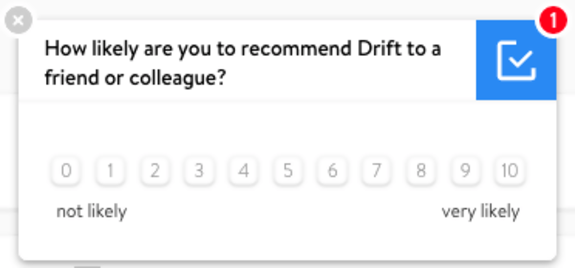Customer Satisfaction: Metrics That Actually Matter

Not all metrics are created equal when it comes to customer satisfaction measurement. Discover which KPIs reveal real insights—and which ones are just noise.
By communicating offline and through their website, social media presence and other online channels, they are interacting with their customers. Therefore today, customer experience (CX) has become one of the foremost metrics that marketers want to measure.
Marketing executives and company leaders want to invest in creating an optimal customer experience. By offering customers the experience they expect helps in converting them into loyal customers and advocates.
Key takeaways
- Customer Satisfaction (CSAT): Measures how satisfied customers are with your product/service through surveys; helps identify happy and unhappy customers for better engagement.
- Net Promoter Score (NPS): Gauges customer loyalty by asking how likely they are to recommend your business; useful for identifying brand advocates and detractors.
- Customer Effort Score (CES): Tracks how easy it is for customers to interact with your business; lower effort = better experience and retention.
- Customer Churn Rate: Indicates the percentage of customers leaving over time; essential for understanding revenue loss and improving retention strategies.
On this page:
What is customer experience?
You can describe it as what the customer thinks about the interaction they had with the company they are doing business with. These interactions can be either positive or negative.
For example, consider someone walking into an Apple Store, they would expect a higher quality of service compared to a random mobile store. Why? Because Apple stores are known for offering personalized attention to their customers.
Key customer experience metrics you need to track
There is a variety of different metrics that are used by companies to measure customer experience. Here are the four most common (and important) customer experience metrics:
1. Customer Satisfaction Survey (CSAT)
How satisfied are you with our products and/or services?
Chances are you must have heard or read this question often. The reason you have is that businesses want to know whether their customers are happy with the product or service they recently used.
This is known as customer satisfaction or CSAT. It’s a metric that businesses use to find out the degree to which a customer is satisfied. Surveys are used to find out how customers feel about the product or service that they recently bought and used. Were they satisfied? Was it according to what they were expecting?
Customers rate their experience between highly satisfied to highly unsatisfied (there can be variations). Here’s one we found that is being used by Hertz on their website:

Why is it important to use CSAT?
Imagine if you are running a business and do not know whether your customers are satisfied with your product or service. By using CSAT surveys, you can not only find out if they were unhappy with you but also come up with strategies on how to turn them into happy customers.
Remember, today any customer can leave negative feedback that can be read by hundreds before you can control the damage. That’s why we need CSAT.
But it also helps you in identifying customers that are happy with your service too. You can focus your attention to retain these customers as they share positive feedback about you with others and are more profitable as well.
What to do with CSAT?
Using CSAT to detect negative feedback and unsatisfied customers can be of great value for your business.
It’s important to react fast and resolve things quickly. Starting a conversation and determining what went wrong can help you regain trust from customers, not to mention detect any faults in your sales system/process and improving on it.
Why is it important to use CSAT?
Companies today love it when customers become brand advocates. Why?
Because today, potential customers like to read reviews and ask their peers before making buying decisions. And finding good things about your business helps them in their decision-making process.
With Net Promoter Score or NPS, businesses can figure out their customers’ satisfaction level and how they perceive their brand.
Through NPS, businesses can identify customers that are going to be their brand ambassadors: Individuals that will recommend their products or services to others.
To find out the NPS, businesses use a survey to see what the customers think about them. There is a single question using the below format:
“How likely is it that you would recommend (name of the product/service) to someone you know?”
Answers are collected on a scale of 0 to 10 with 10 being the highest indication of customer loyalty with the brand.
How to use Net Promoter Score (NPS)?
The first step is asking your customer on a scale of 0 to 10, whether they are going to recommend you to their friends or family.
After you have compiled the results, you are going to categorize your respondents on the same scale but in three different groups.
The first one is for “detractors” which lie between 0-6. Then you have the “passives” that in between 7-8 and lastly you have the “promotors” that are set at 9-10.
Here’s how Drift is using NPS to measure customer satisfaction:

As the category names suggest, promotors are your best customers, they are enthusiastic about your brand and will tell their friends, family, and peers about your business and bring in more customers.
Passive customers are those that are on the edge, indifferent about your business and might switch to your competition if they find them more lucrative.
At the end are your detractors. They are usually angry or unsatisfied with your brand and will leave a bad review, share their bad experience with others, and end up creating negative word of mouth.
Why do we use NPS?
Customers today can easily share their negative feedback with others. A bad review on Yelp.com or a Facebook page review with a single star and bad comment can shun away any new potential clients.
Potential clients want to know what others are saying about your business. With NPS, you can easily find out your brand loyalists, focus on customers that had a bad experience and find ways to improve their experience to try and retain them.
There is always more value in retaining your existing customers as getting a new one can be 5 to 25 times more expensive to find.
What to do with NPS?
As written above, collecting the NPS score gives you the idea of who your best customers are. Since they love your brand and product, there are more than a few options you to choose from when dealing with them.
You can:
- Ask them to leave a review on your website or third-party review sites
- Promote your other products and try to upsell
- Get them to share your content and products on their social media
For those who left a score in a passive or detractor zone, it’s important to switch your attention to their feedback. Ask questions or even include the optional “Why did you select this score?” in the NPS form.
Putting the extra work on those customers can pay dividends:
- Follow up ASAP to their feedback and it’s crucial to personalize your communication
- Identify key points they make and act on it
3. Customer Effort Score (CES)
4. Customer Churn Rate
One of the most important metrics for businesses is to find out the customer churn rate.
Customer churn rate helps you to know the percentage of customers that are no longer using your product or service within a specific time frame. By calculating the churn rate, businesses can find out how many customers left it in a month, quarter or a year.
Consider this, if your business started the month with 500 customers and at the end of the month, you had 400 customers, your churn rate was 20% which means you lost 20% of your customers.
Now if each customer was worth $20 per month, then you lost $2,000 in revenues for that month.
Here’s a nifty calculator that you can use to find out your business churn rate.
Why is customer churn rate important?
Every business is going to lose customers, that’s a fact that every business owner knows. And losing 20% of customers doesn’t necessarily need to look threatening.
But, getting new customers is an expensive affair. Retaining an old customer is a much better option since having just 5% of returning customers can greatly help in increasing revenue. Knowing your customer churn rate is important. Having a number allows you to understand the loss of revenue, customers and gives you better a better insight to make decisions to reduce the churn rate.
What to do with customer churn rate?
If a company is having problems with a high customer churn rate, there are solutions that can help reduce this number.
For example, analyse your initial approach. Are you doing everything possible to make the customer feel appreciated and wanted? Step up your game from the start of their journey. Offer advice, suggest related or similar products, etc.
The issue might also be your customer support. Are your employees regularly trained or at all? Not everyone has the right skill set to deal with demanding customers and even if they are experts in the field, people skills also need to be learned.
Analyse your churn rate, find out where and why you’re losing customers and don’t forget, even if your churn rate is not very high, you should do whatever is in your power to impress your customers and show them that you care.













